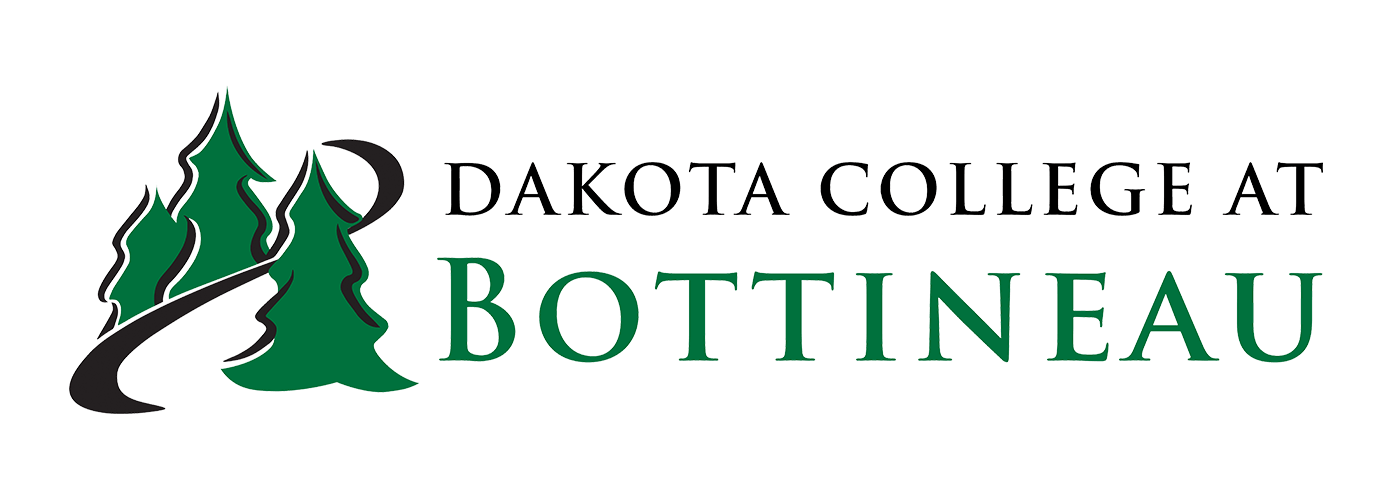The library is centrally located on the campus on the first floor of the new addition to Thatcher Hall. This facility provides students, faculty, and residents of the surrounding communities with access to traditional library materials, computer databases and the many informational resources on the Internet. The library circulates over 28,000 individual items and has current subscriptions to about 200 periodicals. All daily North Dakota newspapers and a majority of the weekly ones are available in the main reading area. The collection also contains more than 1,000 audiovisual items, mostly instructional in nature.
Access to the library's collections is through ODIN (Online Dakota Information Network), a computerized database listing holdings of all North Dakota public college and university libraries as well as a wide variety of public, school, and special libraries. The combined collection of these 60+ libraries numbers more than 2,000,000 unique records. Also available through ODIN membership are the EbscoHost and Thompson Gale magazine indexes as well as Electric Library database. These databases include full text articles as well as excerpts from reference books, pamphlets, maps, photos, audio clips and links to related topics. State funding through the North Dakota State Library provides access to WorldCat, a Health and Wellness database and a Genealogy database.
Encyclopedia Britannica Online is also available on all computers across the campus.
During the regular academic year, the library is available for student use 70 hours every week. There are a variety of study areas and a number of computer workstations in the library for student research activities. Librarians and student workers are available to assist students in their research efforts. A library committee of faculty from various areas of study makes and approves library policies.
Questions about Plagiarism and Ethical Use of Information?
Check out this great video to learn about Information Literacy.
Library Training Guides and Tutorials for accessing library resources
Need help with using our library resources? Check out the following guides and tutorials are available help you use our Library Catalog (called ODIN) and our Online Library Resources (databases). These resources are a combination of print guides, slideshows, and video tutorials.
Mission Statement
The primary purpose of the Dakota College at Bottineau Library is to support the mission of Dakota College at Bottineau. In support of DCB's mission, the library provides the services and resources necessary to meet the educational and informational needs of the Dakota College at Bottineau community, as well as the needs of the Bottineau and the surrounding communities.
Library Objectives
The basic objective of the Dakota College at Bottineau Library is to play its full part in supporting the instructional programs of the university:
- To secure, organize and service books, periodicals, documents, audio, and video recordings, and other library materials used in instructional programs.
- To provide the physical facilities and equipment that will make possible the effective use of library resources.
- To increase knowledge of the basic reference sources by providing guidance in the use of library facilities.
- To encourage students to develop the habit of self-education in order that books, other media and libraries may contribute to their intellectual development in future years.
- To encourage extracurricular use of library materials.
- To assist and cooperate with libraries in the community, region, and elsewhere in building total library resources and in making them available to users
The library is primarily a teaching instrument. The professional library staff, administrative organization and building are so planned as to implement teaching and learning by the use of all library material. The staff is composed, therefore, of educators, who teach, not in the classrooms, but by mobilizing the resources of the library according to a well-defined program.
Information Literacy Tools for Faculty
Use these pre-assessments early in the semester to determine your students’ ability to access books, articles, and reliable websites.
If students’ research skills need improvement, the class could benefit from library instruction designed to support the research assignment.
The ideal time for library instruction is just after the assignment is introduced when students are familiar with your requirements and your expectations.
Contact Hattie Albertson to request an instruction session for your students if you need further assistance.
